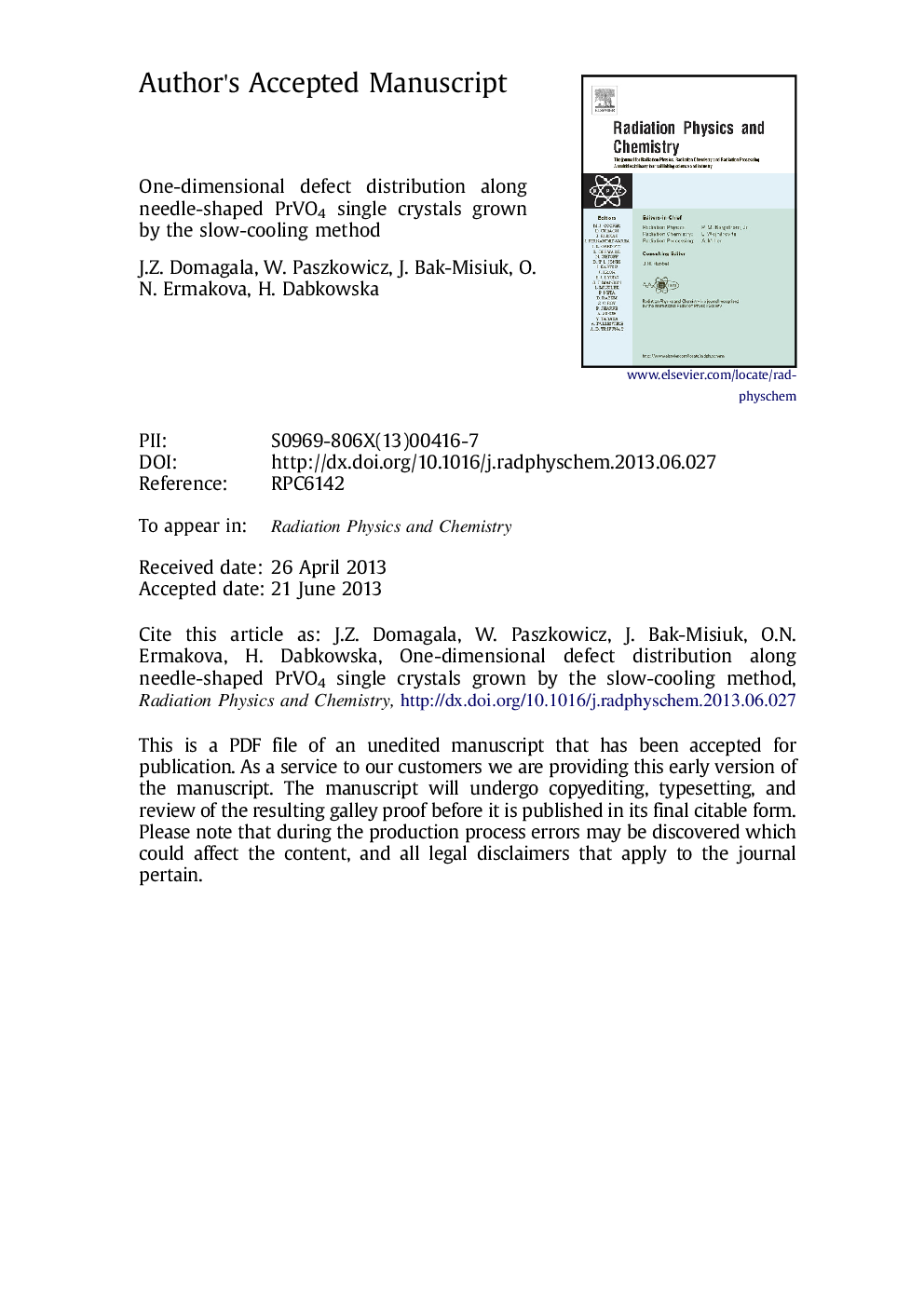| Article ID | Journal | Published Year | Pages | File Type |
|---|---|---|---|---|
| 1891445 | Radiation Physics and Chemistry | 2013 | 75 Pages |
Abstract
Spatially resolved X-ray diffraction techniques provide useful quantitative information on the defect structure distribution for single crystals, thin films or nanowires. In this study, high-resolution X-ray diffraction is used at a laboratory X-ray source, to study the defect structure of undoped and Yb doped needle-shaped PrVO4 crystals grown by the slow cooling method, and to observe the effect of Yb doping on crystal structure and quality. General information on the defect structure is derived from reciprocal lattice-point maps at several selected points. Details of the defect structure are obtained with the use of mapping of triple axis rocking curves and of 2θ/Ï diffraction curves. Combining these techniques provided useful information on the variation of defect nature and distribution along the crystals. There is no particular difference between the undoped and doped crystals. They are typically single crystalline, some of them are built from several blocks with misorientation angles up to several hundred arcsec. The full width at half maximum (FWHM) at the central part of the crystals is as low as about 10-12 arcsec. There is a tendency of FWHM to increase close to the crystal tips, demonstrating that the crystals are of lower crystalline quality at these regions. The mappings performed for (100) and (010) faces show that one of faces exhibits a small curvature (the lattice tilt being smaller than 2 arcsec/mm), whereas the other is characterized by a larger curvature (the tilt by at least three times larger). Unexpectedly, the reciprocal lattice-point maps for (100) and (010) crystal faces include an additional reciprocal lattice point of weak intensity. Its possible origin is discussed.
Related Topics
Physical Sciences and Engineering
Physics and Astronomy
Radiation
Authors
J.Z. Domagala, W. Paszkowicz, J. Bak-Misiuk, O.N. Ermakova, H. Dabkowska,
